Daniel Ellsberg, former defense analyst who released top-secret Pentagon Papers, dies at 92
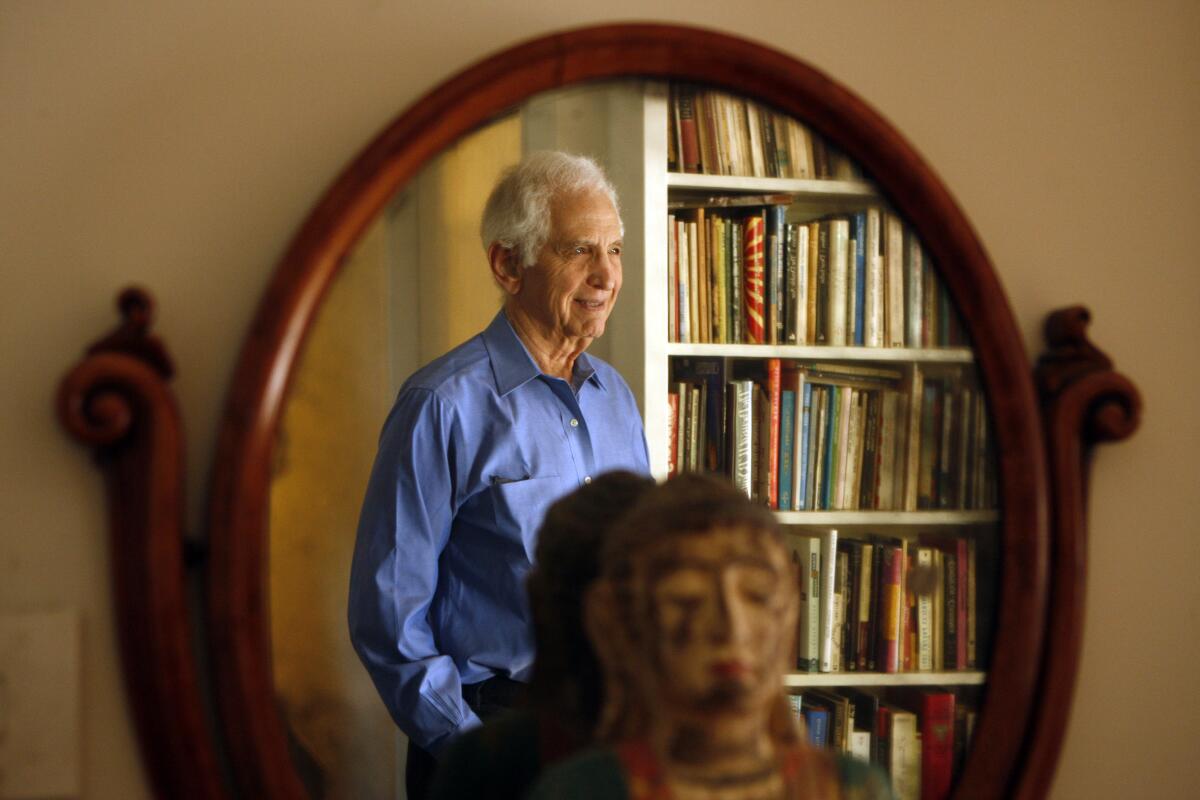
- Share via
Before Edward Snowden and Julian Assange, there was Daniel Ellsberg.
The prototypical modern whistleblower, Ellsberg barreled into history in 1971, when he leaked the highly classified history of American involvement in Vietnam that became known as the Pentagon Papers. His unprecedented act drew back the curtain on the largely hidden world of U.S. policy-making, triggered court battles over freedom of the press and led to calamity for the presidency of Richard M. Nixon.
Considered a hero by some and a traitor by others, Ellsberg announced in February that he had inoperable pancreatic cancer and only months to live. He died Friday at his Bay Area home in Kensington, his family said in a statement. He was 92.
In a letter to supporters about his diagnosis, Ellsberg wrote that he felt “lucky and grateful” for his life.
“I had every reason to think I would be spending the rest of my life behind bars,” the former defense analyst wrote of his decision to share the papers with the New York Times and other publications. Instead, he spent the decades after the dismissal of the government case against him as a writer, lecturer and antinuclear activist. He remained an ardent critic of the government, particularly during the 1990-91 Persian Gulf War and the 2003-11 Iraq War. He encouraged whistle-blowing and was a prominent advocate of Snowden, who leaked top-secret documents about the National Security Agency’s domestic surveillance practices, and Assange, the founder of Wikileaks.
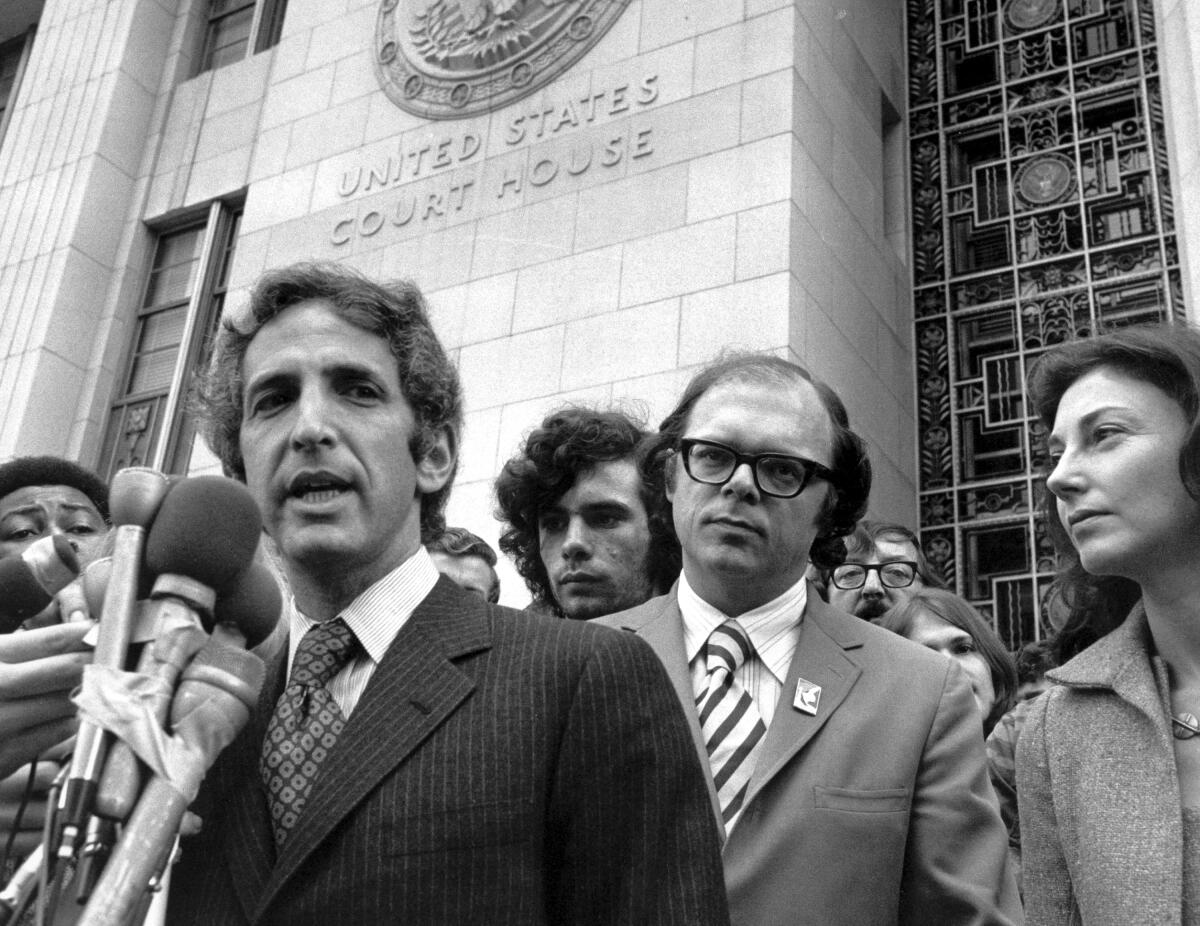
“Something like the Pentagon Papers should be coming out several times a year,” Ellsberg told a Georgetown University symposium in 2017.
The 7,000-page, 47-volume report told how four successive presidents, beginning with Truman, had lied about the scope of U.S. involvement and prospects for victory in Vietnam. Ellsberg, a hawkish former Marine lieutenant and Harvard PhD, had helped produce the study for Robert McNamara, who, as Defense secretary for Presidents Kennedy and Johnson, had been the chief architect of the Vietnam War. Ellsberg hoped that publishing the papers would quickly end the unpopular war.
After the New York Times began to publish excerpts from the papers, Ellsberg became a wanted man. He eluded an FBI manhunt for two weeks while he supplied copies of the purloined report to more than a dozen other major U.S. newspapers, including the Los Angeles Times.
He eventually surrendered and was indicted on 12 federal counts, including conspiracy, theft of government property and espionage. He was set free in 1973 after disclosures of government misconduct led a federal court judge in Los Angeles to declare a mistrial.
Daniel Ellsberg’s role in leak of Pentagon Papers gets a second look
A complicated man of great intellect and ego, Ellsberg led a remarkable life even before he became notorious through the Pentagon Papers. By coincidence or design, he witnessed seminal events of the Vietnam era and worked closely with a number of its key figures.
He met Henry Kissinger at Harvard years before Kissinger, as Nixon’s national security advisor, would condemn Ellsberg as “the most dangerous man in America.” Ellsberg started work at the Pentagon in 1964, as one of McNamara’s “whiz kids,” on the day of the Gulf of Tonkin incident, a confrontation with North Vietnam that Johnson used to obtain authority to wage open combat in Vietnam.
Ellsberg went to Vietnam a year later, where he gained an insider’s view of the war from two of its legendary figures: Gen. Edward Lansdale, who had inspired the character of Pyle in Graham Greene’s “The Quiet American,” and John Paul Vann, the former Army officer and outspoken critic of U.S. policies in Vietnam, whose exploits were detailed in Neil Sheehan’s Pulitzer Prize-winning book “A Bright Shining Lie.” Sheehan was the reporter Ellsberg would later turn to for help in publicizing the Pentagon Papers.
Mordechai Vanunu blew the whistle on Israel’s bomb. More of his ilk are needed.
Releasing the papers did not bring the swift end to the war that Ellsberg had hoped for: Official U.S. involvement in Vietnam did not cease until 1973, two years after their publication in the New York Times. But Ellsberg’s act did have dramatic consequences.
The papers indelibly altered the national political context, revealing a deep-seated cynicism toward the American public that eroded confidence in the government.
The leak also spurred the creation of the Plumbers, a clandestine White House unit tasked with investigating and discrediting Ellsberg that went on to commit crimes for Nixon’s reelection committee, including the Watergate burglaries.
Turned his Nixon era infamy into a successful TV and talk show career
Its operatives, led by G. Gordon Liddy and Howard Hunt, broke into the offices of Ellsberg’s Beverly Hills psychiatrist in search of compromising material. They later committed the crime that would establish them as bunglers of historic proportions: the break-in at the Democratic National Committee headquarters at the Watergate complex in Washington, D.C. The ensuing scandal engulfed Nixon, forcing his resignation on Aug. 9, 1974.
“The Pentagon Papers affair, in short, led directly to the unraveling and final disintegration of the Nixon presidency,” Pentagon Papers historian David Rudenstine concluded in his 1996 book “The Day the Presses Stopped.”
Ellsberg spent the next several decades as a writer, lecturer and antinuclear activist. He supported Snowden, whose 2013 leak of a massive trove of National Security Agency documents made him the most famous whistleblower of the 21st century.
Ellsberg’s path from warrior to iconic pacifist began in Chicago, where he was born April 7, 1931. He grew up in Detroit, the second of three children of middle-class Jewish parents who converted to Christian Science. His father was a structural engineer; his mother was a musician who made Daniel practice piano up to eight hours a day, beginning when he was 5. He continued the regimen even after her death in a car accident when he was 15.
A full scholarship allowed him to attend Harvard, where he studied economics and political science. He finished third in his class and earned a bachelor’s degree in economics in 1952. He then studied at Cambridge University on a Woodrow Wilson Fellowship before returning to Harvard in 1953 for a master’s degree in economics.
At Harvard he met Carol Cummings; they married and had two children, Robert and Mary, before divorcing. In addition to his older children, he is survived by his second wife, Patricia Marx; their son, Michael; and several grandchildren.
Swayed by the movie heroics of John Wayne, Ellsberg in April 1954 waived his student draft deferment and signed up for two years in the Marines. He became an expert marksman and commanded a rifle company in the 2nd Marine Division at Camp Lejeune, N.C. He extended his tour during the Suez Crisis in 1956 in the hope that he would lead troops in combat, but the U.S. did not intervene militarily.
“At that time in my life,” he wrote in his 2002 memoir “Secrets,” “I cared a great deal about how well we fought, but very much less about whom we fought, or why. That was for the president to decide.”
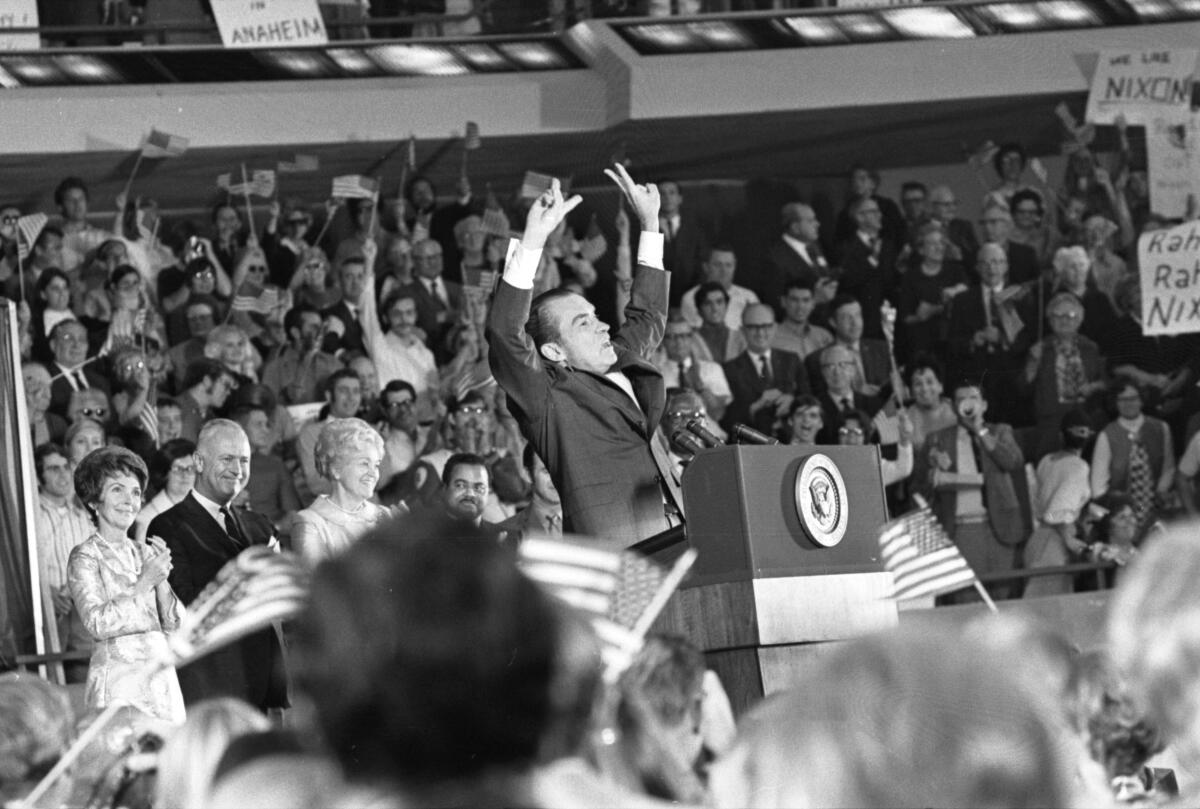
That attitude, molded by World War II and the Cold War, remained with him for another decade.
After completing his military service, Ellsberg earned a doctorate in economics at Harvard in 1959. That same year he joined Rand Corp., the Santa Monica-based think tank, frequently traveled to Washington for high-level meetings and took part in discussions that helped shape Kennedy’s responses to the Cuban Missile Crisis in 1962.
In 1964, he moved to Washington to join the staff of John T. McNaughton, assistant secretary of Defense for international security under McNamara. He helped McNaughton manage the torrent of information pouring into the Pentagon about U.S. activities in Vietnam. He supported the Johnson administration’s Vietnam policies and sometimes helped McNaughton concoct “10 alternative lies” to help McNamara explain difficult situations related to the war.
Sometimes leaking classified documents is justified and sometimes it’s not. Here are some clues to help tell the difference.
In 1965, Ellsberg went to Vietnam to conduct political work as part of an interagency group.
What he observed there turned him against the war: South Vietnamese troops who avoided combat, corrupt officials who stole supplies intended for civilians, the senseless burning of villages and the shooting of unarmed peasants suspected of Vietcong ties. Pacification wasn’t working, and casualties — American and Vietnamese — were mounting.
By 1966 he concluded that U.S. efforts in Vietnam were going nowhere. When he left the country the following year, he was obsessed with telling the truth about what was happening in Vietnam.
Despite sunny public pronouncements about the progress of the war, McNamara also had grown disillusioned. By mid-1967, the Defense secretary was convinced that U.S. policy in Vietnam had failed.
“The thought that scholars would surely wish to explore these questions once the war had ended was increasingly on my mind,” McNamara wrote in his 1995 book “In Retrospect: The Tragedy and Lessons of Vietnam.” He asked McNaughton to begin collecting documents for an objective study on the causes of the war.
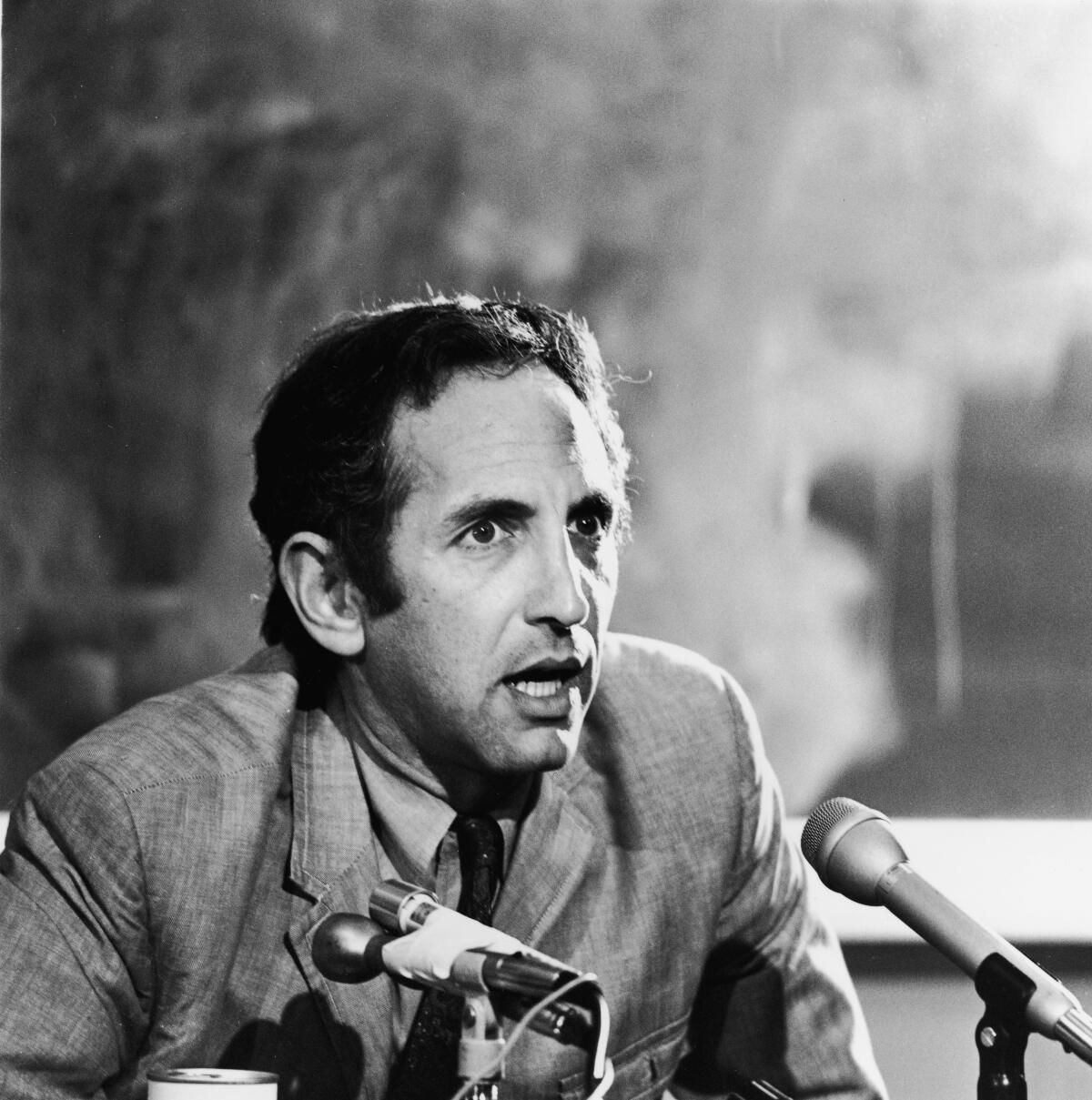
Ellsberg was invited to join a team of researchers that would conduct a study of Vietnam decision-making from 1945 through 1967. In all, 36 researchers worked 18 months to complete the report. Ellsberg, who contributed to a section on Kennedy’s actions in 1961, would become one of the few to read it in its entirety.
Although he was not working directly for the government, Ellsberg as a Rand analyst maintained an inside track through a series of high-level assignments. After McNamara resigned to head the World Bank in 1968, Ellsberg became a consultant to a group evaluating Vietnam options for the new secretary, Clark Clifford. He later advised Kissinger on a similar project for the Nixon administration.
In February 1968, Ellsberg learned that Army Gen. William C. Westmoreland, commander of U.S. forces in Vietnam, was requesting an increase of 206,000 troops, which would bring the total to more than 700,000. Determined to prevent what he saw as a dangerous escalation, Ellsberg leaked to Sen. Robert F. Kennedy a classified report on Westmoreland’s request.
It was also leaked to the New York Times, sparking outrage in Congress, where some members began to call for the repeal of the Gulf of Tonkin resolution that had given the president such broad authority to wage war.
The reaction surprised Ellsberg and taught him a lesson: “Leaking could be a patriotic and constructive act.”
Ellsberg acted on his newfound belief soon after the Westmoreland story ran. In March 1968, he divulged classified reports and documents to Sheehan, who was by then the New York Times’ Pentagon reporter. Sheehan wrote an article saying that the U.S. had drastically underestimated the enemy’s strength before the Tet offensive of January 1968, which produced a U.S. death toll of more than 1,000.
By the end of March, Johnson announced an end to the bombing in North Vietnam and shocked Americans with his decision not to seek a second full term in office.
In 1969, while steeped in Vietnam studies for Rand and Kissinger, Ellsberg asked Pentagon officials for permission to take some volumes of the McNamara study back to his office in Santa Monica. That summer, he began to read the secret history of the Vietnam War.
He learned that, as far back as 1948, American advisors, impressed by the popular support enjoyed by Communist Party leader Ho Chi Minh, had warned against an intervention in Vietnam. But U.S. involvement gradually escalated under three presidents: Eisenhower, Kennedy and Johnson.
Ellsberg quickly reached the conclusion that the Vietnam War had never been a civil war, as historians had usually described it, but “a war of foreign aggression, American aggression.” He began to believe that the war had been wrong from the start — not just strategically misguided but immoral.
The wheels began to turn in Ellsberg’s head when he read a report in the Los Angeles Times about the Army’s decision to drop charges against eight Green Berets charged with killing a suspected Vietnamese double agent. Reading between the lines, he concluded that the White House had exerted pressure on the Army to abandon the case in order to cover up a murder and prevent the public from learning the true facts behind it. Outraged, he vowed that he was not going to be “part of this lying machine, this cover-up, this murder, anymore.”
His thoughts turned to the study hidden in his safe at Rand. He now saw it as “7,000 pages of documentary evidence of lying, by four presidents and their administrations over 23 years, to conceal plans and actions of mass murder.” He decided he could no longer keep it under wraps, even though in releasing it, he would betray close associates who had trusted him to keep it confidential.
That same day he called Anthony Russo, a former Rand colleague who had often encouraged Ellsberg to go public.
When Ellsberg got to Russo’s apartment, he told him about the McNamara report and asked if he had access to a photocopy machine. Russo offered the help of his girlfriend, Lynda Sinay, who owned an advertising agency in Hollywood.
The copying started on the evening of Oct. 1, 1969, and continued every night for several weeks. Twice, the operation was interrupted by police officers who came to Sinay’s office when she accidentally set off a silent alarm, but for the most part, the copying proceeded without mishap.
Sheehan, among the “Boys of Saigon” group of young Vietnam War correspondents, worked on the Pentagon Papers, which revealed U.S. deception on involvement in Vietnam.
“I thought I would go blind from the green light of the Xerox machine,” said Ellsberg, who did most of the copying. He was assisted by Russo, Sinay and even his children, Robert, then 13, and Mary, 10. Robert helped run the copy machine, while Mary trimmed pages to remove the words “Top Secret” stamped across them.
By November, Ellsberg had copied enough of the report to offer it to Sen. J. William Fulbright (D-Ark.), chairman of the Senate Foreign Relations Committee. Ellsberg suggested that Fulbright release the papers during a hearing on the war. Initially excited by the prospect of using the papers to criticize the war, Fulbright ultimately decided against putting them out, telling Ellsberg that the papers were “only history.”
Ellsberg tried to interest other members of Congress, including Sens. George McGovern and Charles Mathias, but all turned him down for various reasons. Ellsberg then considered another strategy.
On March 2, 1971, he met with Sheehan and offered a look at the papers. He allowed Sheehan to take notes but refused to let him make copies of the report without a guarantee that the New York Times was going to publish it.
“I didn’t want a copy lying around in an institution that wasn’t going to use it,” Ellsberg explained in a 2021 interview with the Nation.
They arranged to meet 10 days later so that Sheehan could review a set of the purloined papers that Ellsberg had stored at his brother-in-law’s Cambridge, Mass., apartment.
When Ellsberg left town for a few days, he gave Sheehan a key to the apartment and allowed him to keep reading the papers while he was away. The reporter seized the opportunity to have the papers duplicated and surreptitiously shared copies with his editors. Soon a team of reporters and editors were holed up in a New York City hotel reading the papers, marking excerpts and writing articles. Sheehan, wary of losing his scoop, kept Ellsberg in the dark about the New York Times’ plans until just before the first installment was published, on June 13, 1971.
“It was just luck that he didn’t get the whistle blown on the whole damn thing,” Sheehan, in a New York Times interview that was published after his 2021 death, said of Ellsberg’s earlier leaks to the senators.
Claiming that publication of the study endangered national security, the Nixon administration went to court to restrain the New York Times from making further disclosures — the first time the government had attempted to prevent the press from publishing information it possessed. The U.S. Supreme Court ultimately ruled in the Times’ favor, allowing the newspaper to resume publishing reports on the study.
Ellsberg eventually supplied copies of the study to more than a dozen other newspapers, including the Los Angeles Times, Washington Post, Boston Globe and Christian Science Monitor. Before surrendering, he gave Walter Cronkite an interview for the “CBS Evening News” in which he said he hoped the “truth will free us of this war.”
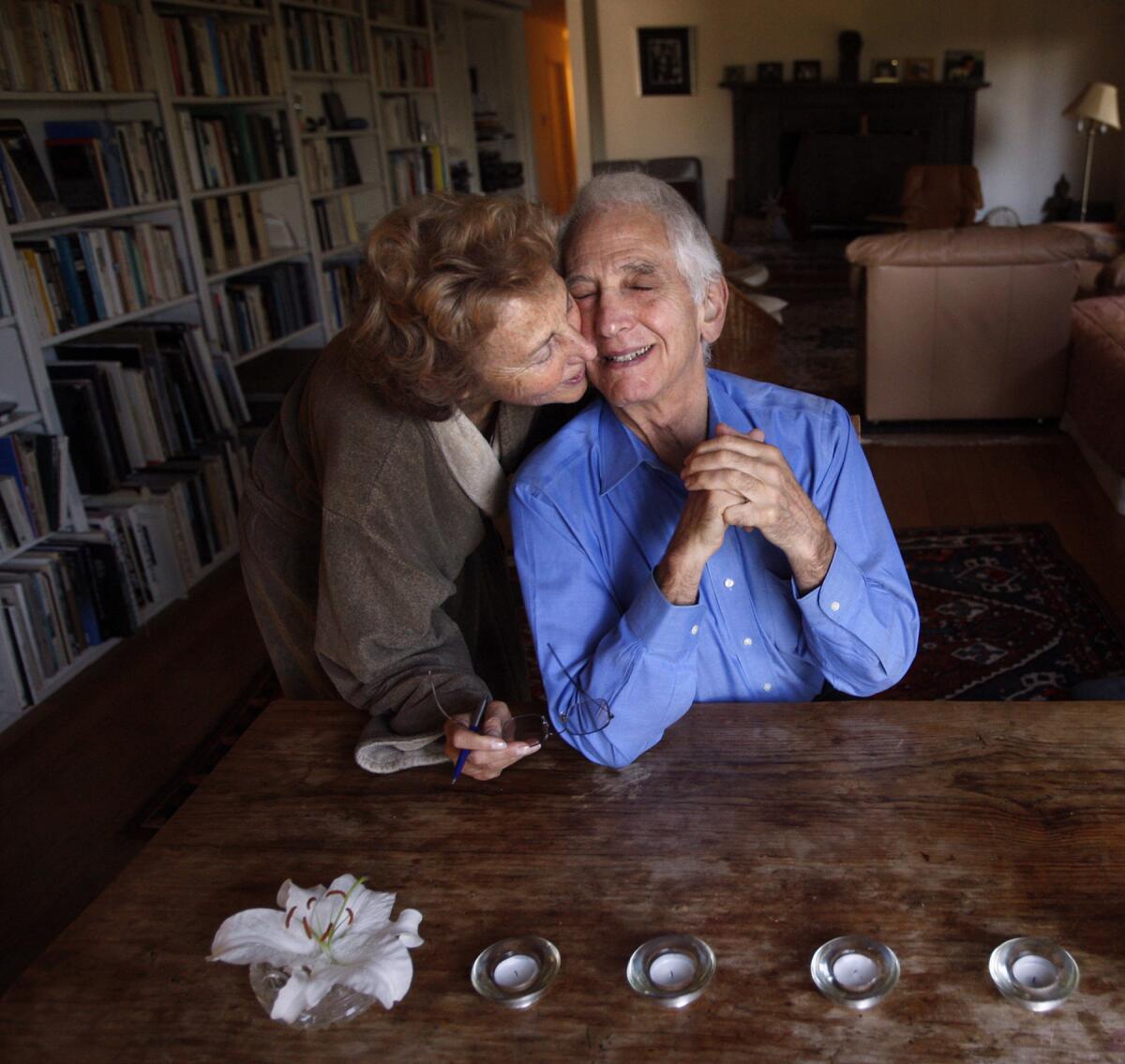
It galled Nixon that the press, never his friend, was turning Ellsberg into a hero. In the Oval Office tapes, the president is heard telling Kissinger and Atty. Gen. John Mitchell how to deal with the situation.
“Don’t worry about his trial,” he said. “Just get everything out. Try him in the press. Try him in the press. Everything, John, that there is on the investigation, get it out, leak it out. We want to destroy him in the press. Press. Is that clear?”
On Sept. 3, 1971, the Plumbers broke into the Beverly Hills offices of Dr. Lewis Fielding in search of Ellsberg’s confidential files but found nothing useful and got away without incident.
The purpose of the crime did not come to light until the Watergate scandal began to bloom. When the judge in the Ellsberg case was informed of the Fielding burglary, the news was announced in the courtroom. That night, Nixon’s top two lieutenants — John Ehrlichman, his domestic affairs chief, and Chief of Staff H.R. Haldeman — resigned, as did Richard Kleindienst, the acting attorney general. White House counsel John Dean was fired.
Ehrlichman, Haldeman, Mitchell and Dean later went to prison for conspiring to hinder the Watergate investigation, as did Egil “Bud” Krogh, who headed the Plumbers unit.
Soon after, Ellsberg and the press learned of other improprieties: that the White House had offered the post of FBI director to Judge Matthew Byrne, who was presiding over the Ellsberg case, and that the FBI had wiretapped Ellsberg’s conversations with a former Defense Department colleague.
After pronouncing these developments “more than disquieting,” Byrne dismissed the case on May 11, 1973. Ellsberg went free. A week later, the Senate Watergate hearings began.
Nixon, in his 1978 memoir, defended the break-in at Ellsberg’s psychiatrist’s office.
“Today it seems wrong and excessive,” Nixon wrote. “But I do not accept that was as wrong or excessive as what Daniel Ellsberg did, and I still believe that it is a tragedy of circumstances that Bud Krogh and John Ehrlichman went to jail and Daniel Ellsberg went free.”
Woo is a former Times staff writer.
More to Read
Start your day right
Sign up for Essential California for the L.A. Times biggest news, features and recommendations in your inbox six days a week.
You may occasionally receive promotional content from the Los Angeles Times.








